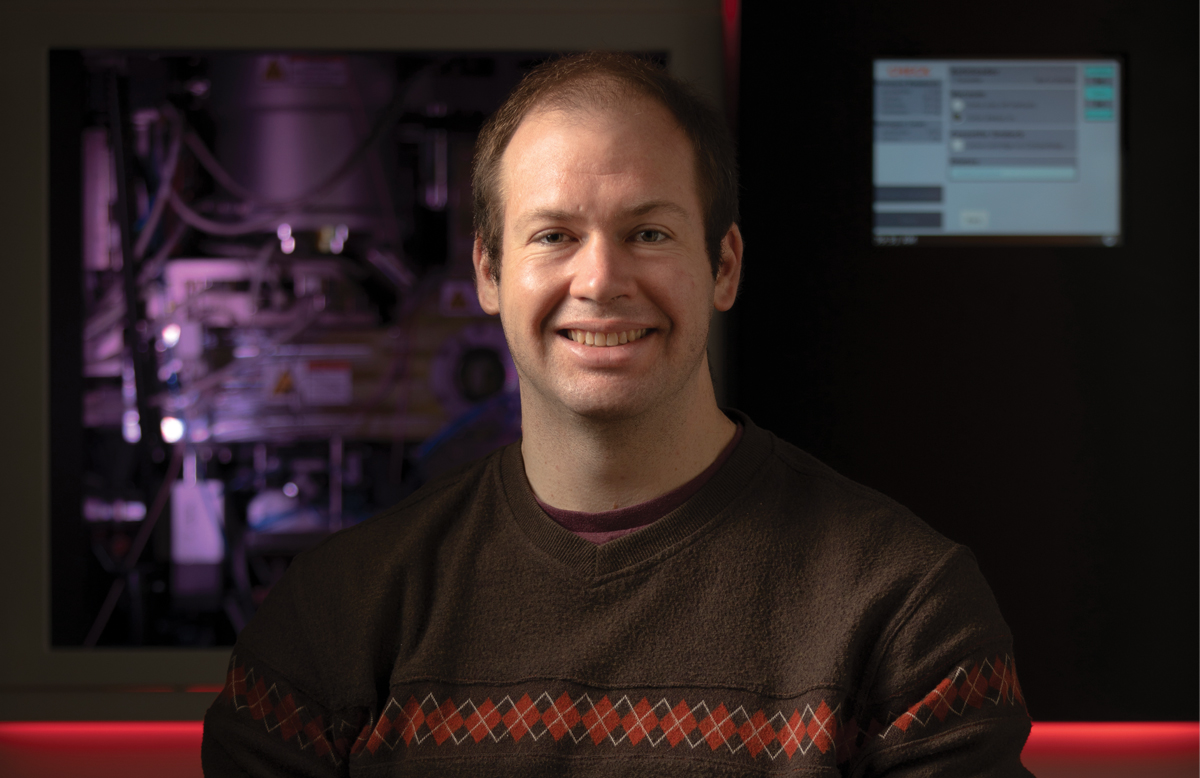Follow-Up
A Step Ahead of the Next Pandemic

In Virus Research Recast, (Grow, spring 2022), Catherine Steffel described how, in the wake of a global pandemic, CALS scientists had pivoted their research to identify avenues for effectively treating COVID-19. Some of these scientists continue to study related viruses. They’re comparing what we know about different coronavirus structures to determine whether therapeutics may be effective across the whole coronavirus family.
“Knowing about differences among coronaviruses gives us important information about what we should be studying if a new coronavirus emerges so that we can be more prepared for the next pandemic,” says Robert Kirchdoerfer, an assistant professor in the Department of Biochemistry. “SARS-CoV-2 is a beta-coronavirus. There are also alpha-, delta-, and gamma-coronaviruses, which we have far less information about.”
Last year, Kirchdoerfer’s team published high-resolution images of RNA polymerase, a protein complex key to RNA replication. The researchers examined images of RNA polymerase from the alpha coronavirus porcine epidemic diarrhea virus (PEDV) and from the gamma-coronavirus infectious bronchitis virus. Comparing these images to past studies of SARS-CoV-2 revealed that the RNA polymerase complexes from alpha-, beta-, and gamma-coronaviruses function similarly. This suggests that antiviral drugs targeting viral polymerase function are likely to be effective across the virus family.
In their study, funded by the National Institutes of Health, they also noted that a part of a protein needed to build viral RNA polymerase was shaped differently in alpha-, beta-, and gamma-coronavirus polymerases. Furthermore, they found that each group of coronaviruses used this part of the protein in different ways to assemble the RNA polymerase.
“Designing new antiviral drugs begins with key foundational work on the biochemistry of viral targets. To do this, scientists rely on federal funding,” Kirchdoerfer says. “Without this support, we will be left without the knowledge, expertise, and strategies to rapidly address newly emerging viruses.”
This article was posted in Basic Science, Follow-Up, Health and Wellness, Summer 2025 and tagged Biochemistry, coronaviruses, COVID-19, federal research funding, pandemic, SARS-CoV-2.
